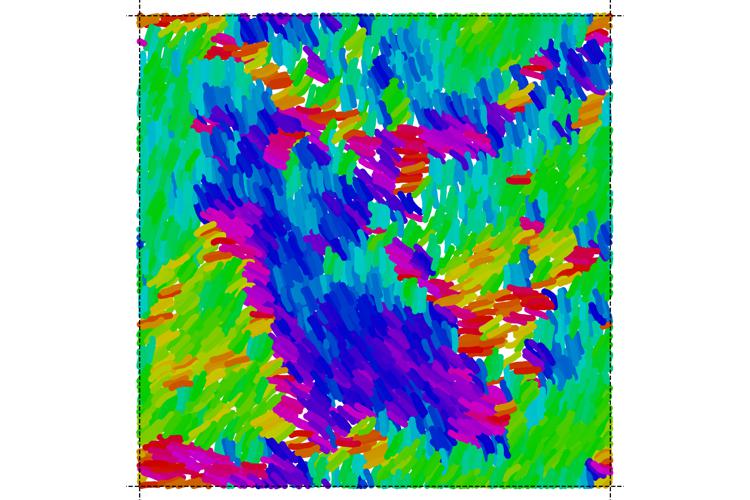- Share
- Share on Facebook
- Share on X
- Share on LinkedIn
Seminar
On December 9, 2024

Mathieu Dedenon (Université de Genève, Switzerland)
Biological cellular tissues are mechanically active, with self-generated stresses emerging from individual cell force dipoles. In parallel, tissues often exhibit nematic orientational order, giving rise to anisotropic active stresses and spontaneous flows. This interplay of nematic order and activity has been explored based on the two-dimensional hydrodynamic theory of active nematics. Fluctuations are typically neglected in this framework, despite the application of the theory to small biological systems. Also, many tissues develop in complex geometric environments.
To address these aspects, we propose an agent-based model that describes active agents as multi-particle filaments with internal flows. We set the symmetry and direction of those active flows to obtain the emergence of an active nematic stress. This framework naturally accounts for cell-cell interactions as the main source of dissipation in three-dimensions, and is designed to capture hydrodynamic modes at large scales. Also, generic rules are introduced to capture agent turnover.
We use this framework to study the active flow transition. It yields results in agreement with the hydrodynamic theory of active nematics. In addition, we find an influence of mechanical activity on the onset of nematic order, and observe the characteristic self-propulsion of +1/2 topological defects. With this versatile framework, we plan to explore active nematics in complex three-dimensional geometries in the future, studying the interplay of mechanical and growth-based activity.
Contact: Jocelyn Etienne
Date
11:00
Localisation
LIPhy, salle de conférence
- Share
- Share on Facebook
- Share on X
- Share on LinkedIn